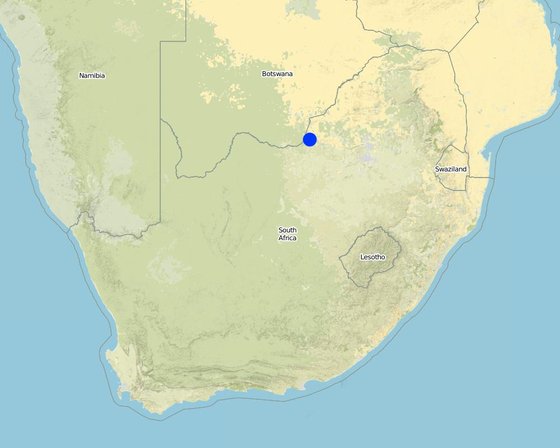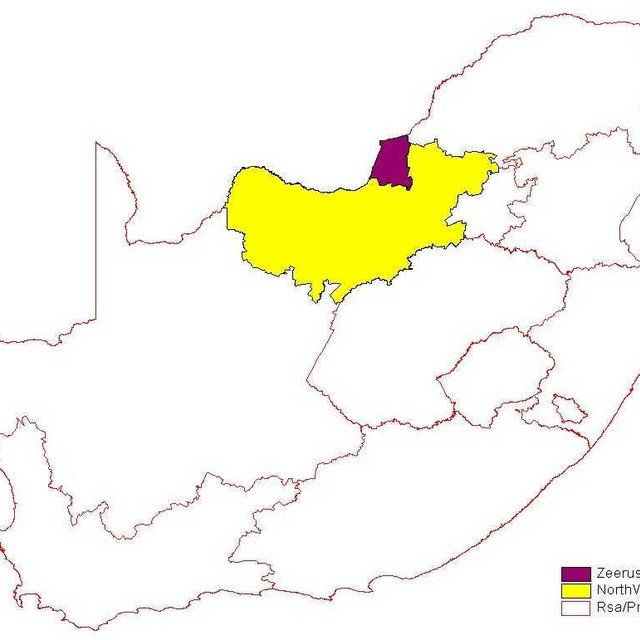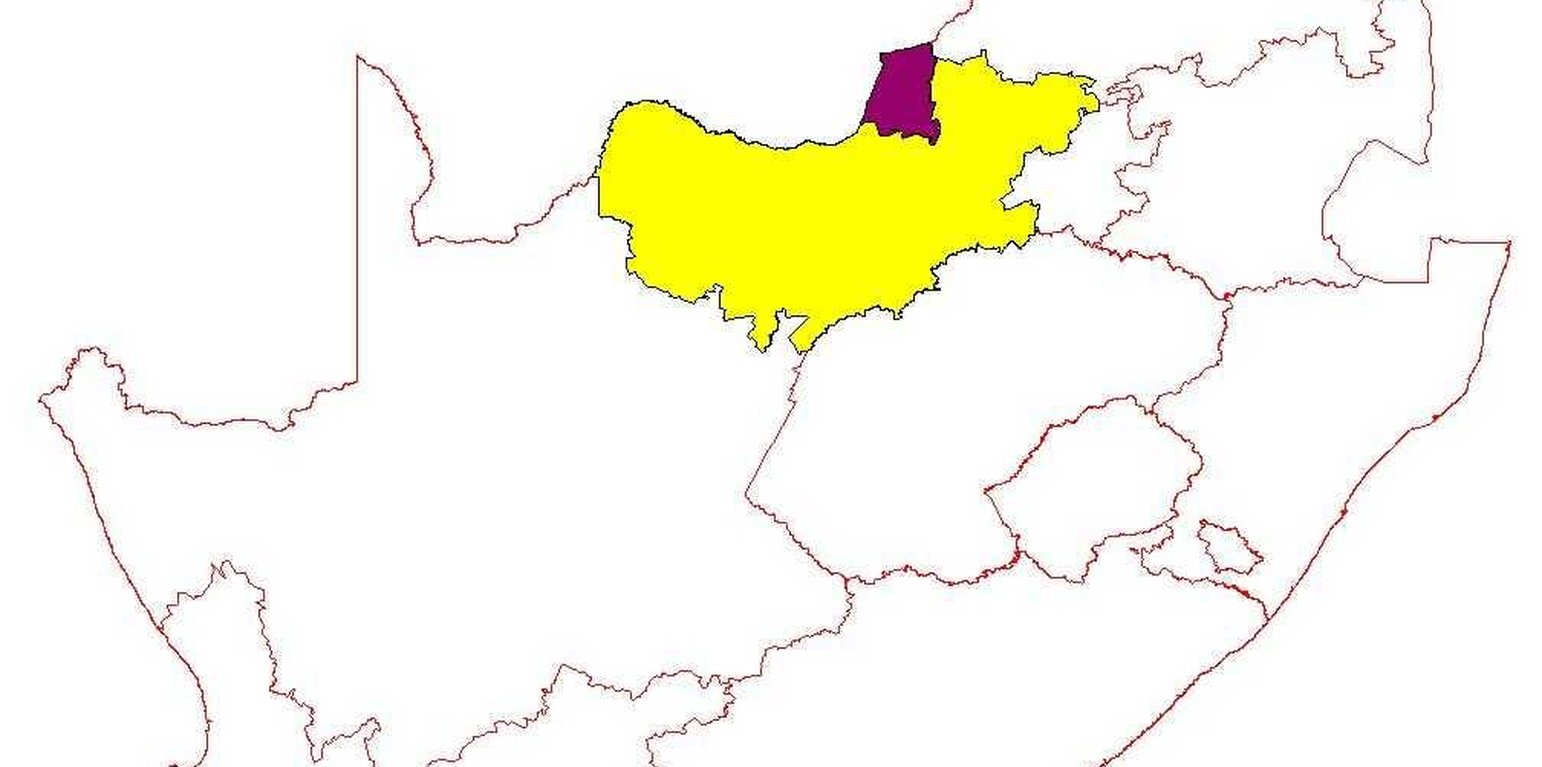Land user participation with research
(South Africa)
Description
Land user participation with researchers to improve existing and develop new technologies
Aims / objectives: Land users implemented the technology but the success was never evaluated. Contacted researcher who quantitatively assessed the technology. The pros and cons of the technology were discussed with the land user and other farmers in the area. All gave comments and shared experiences of how these technologies can be improved. Adjustments were made and on an experimental and demonstrative way, the adjustments were implemented and evaluated.
Location

Location: North West Province, South Africa
Geo-reference of selected sites
Initiation date: 1989
Year of termination: 2001
Type of Approach
-
traditional/ indigenous
-
recent local initiative/ innovative
-
project/ programme based

Map
Approach aims and enabling environment
Main aims / objectives of the approach
The Approach focused on SLM only
Radical veld improvement. Better grazing land. Understand degradation - causes and how to control it. Convey knowledge about restoration technologies to as many land users as possible
The SLM Approach addressed the following problems: Degrade & denuded rangeland Low production of grazing land
Conditions enabling the implementation of the Technology/ ies applied under the Approach
-
Legal framework (land tenure, land and water use rights): The existing land ownership, land use rights / water rights helped a little the approach implementation: hinder: low Privately owned commercial farms
Conditions hindering the implementation of the Technology/ ies applied under the Approach
-
Availability/ access to financial resources and services: Low cost/benefit ratio in the short term
Treatment through the SLM Approach: Proper advice to land user about advantages in the long term
-
Knowledge about SLM, access to technical support: No knowledge
Treatment through the SLM Approach: Awareness & technical support by agriculturists & scientists
Participation and roles of stakeholders involved
Stakeholders involved in the Approach and their roles
| What stakeholders / implementing bodies were involved in the Approach? |
Specify stakeholders |
Describe roles of stakeholders |
| local land users/ local communities |
Farmers association: Mainly white. |
Only men own the land. Commercially owned & managed land |
| SLM specialists/ agricultural advisers |
|
|
| national government (planners, decision-makers) |
Department Agriculture & Resource conservation |
|
| international organization |
|
|
Lead agency
Land uses together with specialists
Involvement of local land users/ local communities in the different phases of the Approach
none
passive
external support
interactive
self-mobilization
initiation/ motivation
Mainly:public meetings; partly: rapid/participatory rural appraisal; Land users approached researcher/scientist for help
planning
Mainly: public meetings; partly: workshops/seminars; What & how to implement technology
implementation
responsibility for major steps; Did apply the technology on their own land
monitoring/ evaluation
measurements/observations; By scientist & students primarily but also with land users who helped
Research
on-farm; On the farmers/land users owned land
Decision-making on the selection of SLM Technology
Decisions were taken by
-
land users alone (self-initiative)
-
mainly land users, supported by SLM specialists
-
all relevant actors, as part of a participatory approach
-
mainly SLM specialists, following consultation with land users
-
SLM specialists alone
-
politicians/ leaders
Decisions were made based on
-
evaluation of well-documented SLM knowledge (evidence-based decision-making)
-
research findings
-
personal experience and opinions (undocumented)
Technical support, capacity building, and knowledge management
The following activities or services have been part of the approach
-
Capacity building/ training
-
Advisory service
-
Institution strengthening (organizational development)
-
Monitoring and evaluation
-
Research
Capacity building/ training
Training was provided to the following stakeholders
-
land users
-
field staff/ advisers
-
extensionists/trainers
Form of training
-
on-the-job
-
farmer-to-farmer
-
demonstration areas
-
public meetings
-
courses
Subjects covered
Land users approached researcher/scientist for help on degradation; natural resources, utilisation & conservation, restoration, reclamation technologies
Advisory service
Advisory service was provided
-
on land users' fields
-
at permanent centres
Learning by doing & seeing is believing; Key elements: Demonstration, On site/farm, Participation; 1) Mainly: government's existing extension system, Partly: projects own extension structure and agent Extension staff: mainly government employees 3) Target groups for extension: land users, technicians/SWC specialists; Activities: Demonstration - participation
Advisory service is quite adequate to ensure the continuation of land conservation activities; Knowledge gained & understood
Institution strengthening
Institutions have been strengthened / established
-
no
-
yes, a little
-
yes, moderately
-
yes, greatly
Describe institution, roles and responsibilities, members, etc.
Type of support
-
financial
-
capacity building/ training
-
equipment
Further details
Monitoring and evaluation
technical aspects were regular monitored through measurements
area treated aspects were regular monitored through measurements
no. of land users involved aspects were regular monitored through measurements;
There were few changes in the Approach as a result of monitoring and evaluation: First - demonstration & awareness Second - implementation & training
Research
Research treated the following topics
-
sociology
-
economics / marketing
-
ecology
-
technology
Research for better or adjustment of existing reclamation technologies - based in ecology
Research was carried out on-farm
Financing and external material support
Annual budget in USD for the SLM component
-
< 2,000
-
2,000-10,000
-
10,000-100,000
-
100,000-1,000,000
-
> 1,000,000
Precise annual budget: n.a.
Approach costs were met by the following donors: local community / land user(s) (-): 40.0%; government (national): 40.0%; other (University): 20.0%
The following services or incentives have been provided to land users
-
Financial/ material support provided to land users
-
Subsidies for specific inputs
-
Credit
-
Other incentives or instruments
Financial/ material support provided to land users
partly financed
fully financed
Labour by land users was
-
voluntary
-
food-for-work
-
paid in cash
-
rewarded with other material support
Impact analysis and concluding statements
Impacts of the Approach
No
Yes, little
Yes, moderately
Yes, greatly
Did the Approach help land users to implement and maintain SLM Technologies?
Oversowing, cultivation, erosion & bush encroachment control
Did other land users / projects adopt the Approach?
Results - to many other districts & land users by workshops, presentations at conferences, collaborations etc.
Main motivation of land users to implement SLM
Sustainability of Approach activities
Can the land users sustain what hat been implemented through the Approach (without external support)?
Depending that guidelines about e.g. soil type, oversowing, bush encroachment eradication, cultivation technology etc. is applied correctly
Conclusions and lessons learnt
Strengths: land user's view
Strengths: compiler’s or other key resource person’s view
-
On farm (How to sustain/ enhance this strength: Encouragement by researchers & technicians/extension)
-
Participation by land owners (How to sustain/ enhance this strength: Follow-up meetings & evaluation)
-
Farmer to farmer. Farmer to scientist. Scientist to farmer. Scientist to extension - farmer (How to sustain/ enhance this strength: Communication; on going support and show interest, continued evaluation & feed back)
Weaknesses/ disadvantages/ risks: land user's viewhow to overcome
-
Too little communication between researchers, farmers & extension
Better participation & interest by all
Weaknesses/ disadvantages/ risks: compiler’s or other key resource person’s viewhow to overcome
-
Not as many farmers involved as would have liked
-
Farmers are scared to leave their farms & families alone to go to meetings & workshops, especially at night
References
Date of documentation: Jan. 14, 2009
Last update: June 19, 2017
Resource persons
-
Klaus Kellner (klaus.kellner@nwu.ac.za) - SLM specialist
Full description in the WOCAT database
Documentation was faciliated by
Institution
- Potchefstroom Universiteit vir CHO (Potchefstroom Universiteit vir CHO) - South Africa
Project





